Korean style mushrooms - shiitake mushrooms with gochujang sauce
Discover our recipe full of flavors of Korean mushrooms. If you love traditionnal Korean cuisine such as the Bibimbap, you'll love this recipe! The tender and juicy shiitake mushrooms go perfectly with the gochujang sauce, offering perfect harmony on your plate between sweetness and spiciness. This recipe is also super quick and easy to make. In a few simple steps, you will have a tasty vegetarian dish, which you can accompany with a simple bowl of white rice or fried noodles for example. Enjoy!
Ingredients
2
For marinade:
For cooking:
To decorate:
Materials
- 1 airtight container
- 1 pan
Preparation
Preparation10 min
Waiting time10 min
Cook time10 min
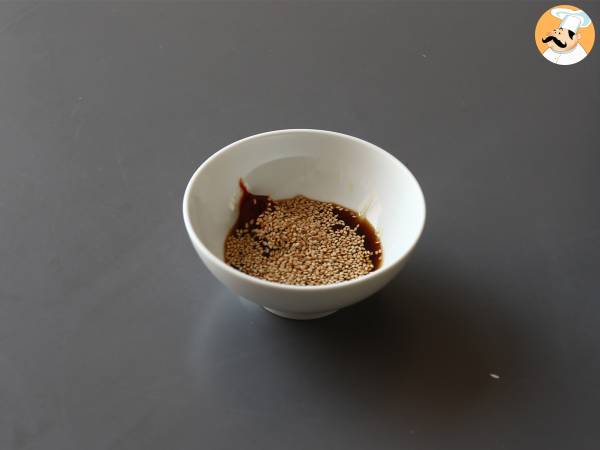 Add the gochujang sauce, soy sauce, mirin, honey, sesame seeds, a small piece of chopped or crushed ginger and the water.
Add the gochujang sauce, soy sauce, mirin, honey, sesame seeds, a small piece of chopped or crushed ginger and the water.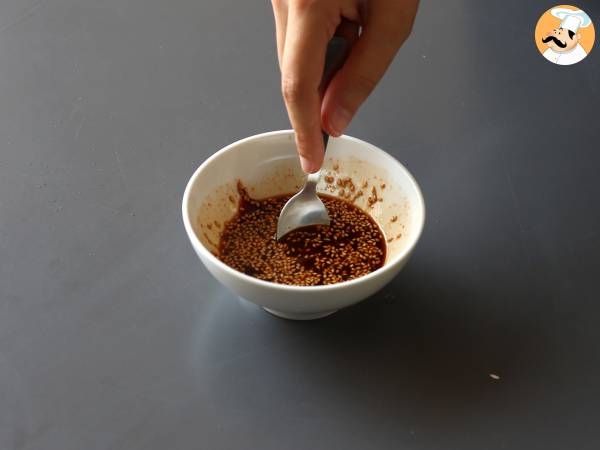 Mix well to combine.
Mix well to combine.
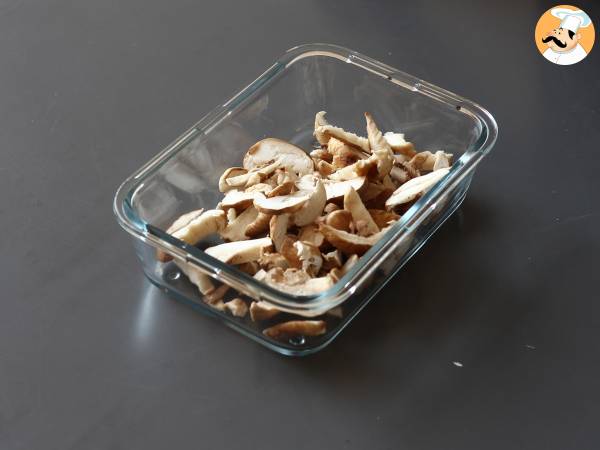 Cut the shiitake mushrooms and transfer them to an airtight container.
Cut the shiitake mushrooms and transfer them to an airtight container. Add the marinade, mix well and close the box. Refrigerate for at least 10 minutes.
Add the marinade, mix well and close the box. Refrigerate for at least 10 minutes.
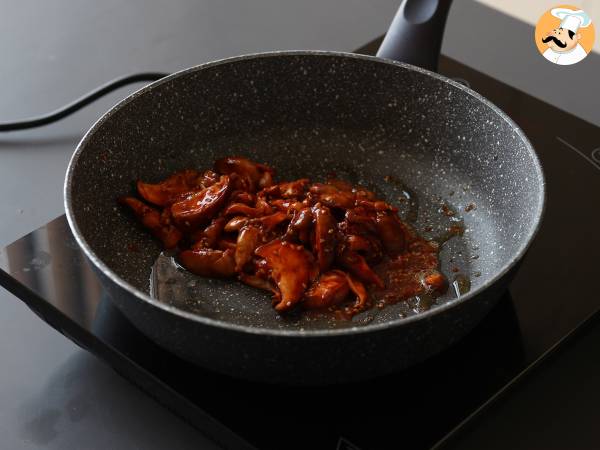 Pour sesame oil into a pan over medium heat. Add the mushrooms and sauté them.
Pour sesame oil into a pan over medium heat. Add the mushrooms and sauté them.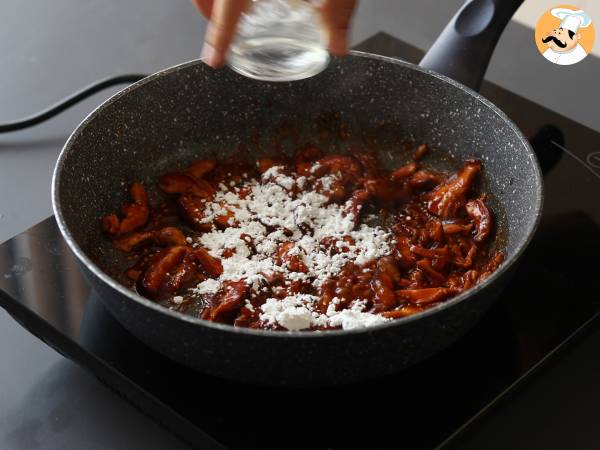 Add the rest of the marinade and the corn starch and stir.
Add the rest of the marinade and the corn starch and stir.
 When the sauce has thickened, serve with rice. Sprinkle some sesame seeds and chopped chives (or scallions). Enjoy!
When the sauce has thickened, serve with rice. Sprinkle some sesame seeds and chopped chives (or scallions). Enjoy!
FAQ ❓
How to store Korean mushrooms?
You can store the mushrooms for 4 days in an airtight container in the refrigerator.
Can I freeze shiitake mushrooms with gochujang sauce?
Yes you can without worry!
Is this dish vegetarian?
Mushrooms in gochujang sauce are vegetarian! You can replace the honey with brown sugar if you want to make this dish in a vegan version.
How to accompany spicy mushrooms?
Use them as a side dish or accompany them with rice or quinoa. Be careful, the mushrooms are spicy, we recommend that you do not over-season your other preparations.
What is gochujang?
Gochujang is a Korean fermented chili paste. Its taste is spicy, sweet and salty. Gochujang is widely used in Korean cuisine.
What is mirin?
Mirin is a kind of very mild and sweet sake (rice wine). This condiment is mostly used in Japanese and Korean cuisine.
Nutrition
for 1 serving / for 100 g
Calories: 171Kcal
- Carbo: 11.2g
- Total fat: 10.7g
- Saturated fat: 1.3g
- Proteins: 4.4g
- Fibers: 1.7g
- Sugar: 5.2g
- ProPoints: 4
- SmartPoints: 6
Nutritional information for 1 serving (117g)
Cookware
burner
Attributes
Suitable for freezing
Keep refrigerated
Questions
Photos of members who cooked this recipe
Comments
Rate this recipe:
5/5, 1 vote(s)




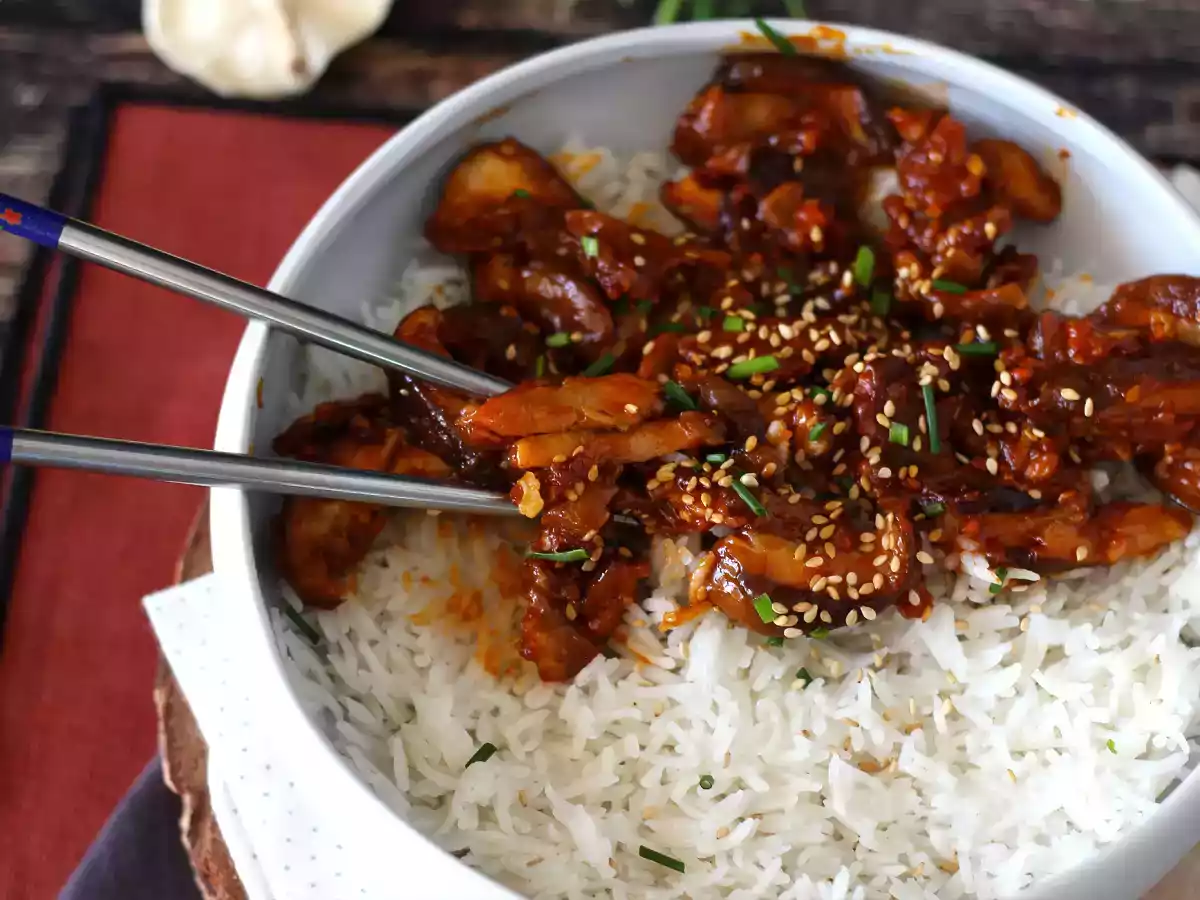
Rate this recipe